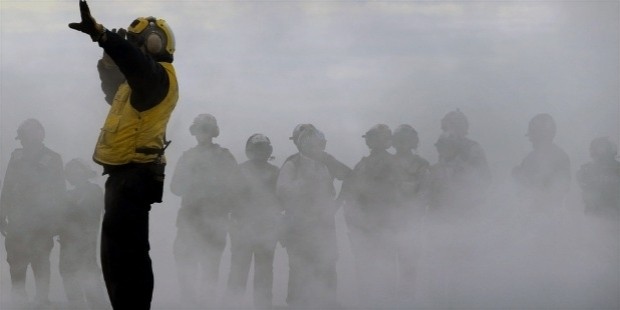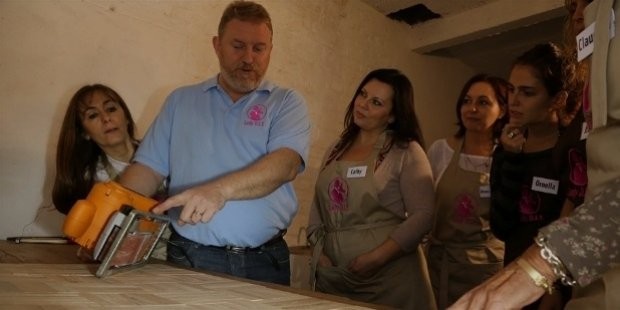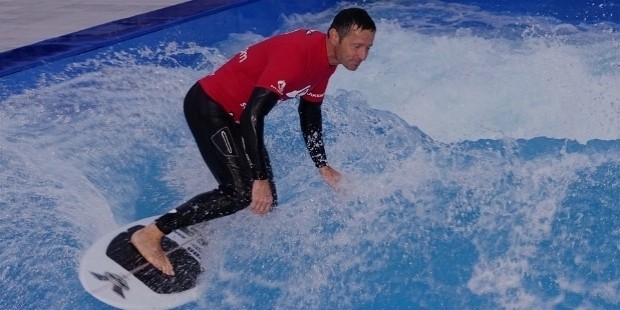Team Building - All You Need to Know

A True Leader
“Leadership is influence. Nothing more, nothing less”- John Maxwell, author and speaker on leadership.
Leaders are agents of transformation to ensure the smooth functioning of an organisation; meeting challenges and overcoming them to surge ahead. They should have the power to influence! An organisation needs leaders with credibility and authority to progress, as they can motivate the work-force to achieve the desired output.
The supreme characteristic of any successful business is timely decision-making, for which good leaders are imperative.
High Potential

A good leader should exhibit aptitude, abilities and performance. The person must be of high character and command respect. This is important as the others should be willing to follow him.
A leader must also possess the necessary knowledge and skills to be able to guide, teach and lead. He must have the quality of trust building.
Involvement

Choose an employee as a leader who feels engaged and involved in the progress of the company. His own commitment levels will define the dedication of the team members.
A good leader’s professional growth must be a reflection of the company’s goals and progress. His decisions and actions must be for the betterment of the organisation.
Taking an Initiative

A good leader will take the initiative to make things happen. He will not hesitate to undertake projects and decisions to help the company grow. He will also not wait to be appointed as a team leader to effectively contribute in decision-making and taking the onus of shepherding a task to completion.
Accountability

Take responsibility- a must for every leader. While everyone would heap praises on the team on achieving success, failure and shortcomings will be met with criticism and reproach.
A leader must be willing to shoulder the responsibility for a project failing, an incomplete task or unsatisfactory output. He should be open to taking criticism.
Effective Communication Skills

Communication is the keyword in the modern times. A leader must be able to share and explain ideas, instructions and expectation to his team members. He has to have a clear vision himself. As communication is a two-way process, a leader needs to be a good listener as well.
Team Leadership Model

What is a “Team Leadership Model?” To put it very simply, it means to lead with style and focus! Each team requires a model unique to the nature of its functioning.
The team leader has to formulate a model to suit the skills of each and every member. From creating a team, nurturing it, making it performance oriented and helping sustain its performance; each stage requires a separate set of rules and strategies.
The first step is to create a team. This requires careful planning, as a new team would want clarity with regards direction, purpose and goal.
The leadership model needs to focus on steering the team in the desired direction, supporting its endeavours, stimulating the members to perform and synergising the team to act as one entity. But for this, the first step would be to support the team and groom it.
Adopting the Appropriate Team Building Strategy

The team is an entity in itself. Building a successful team requires a strategy and focused planning, as a good team will yield good results. From creating, nurturing, steering and sustaining a team; each stage calls for strong leadership qualities. The focus should be to integrate each member of the team and inspire him/her to be at his/her productive best.
This creates a feeling of belonging and ownership in the members. The leader should be the thread who joins all together.
Decide on a Common Goal

A clear goal and a clearly-charted out plan of action is a must for a team to perform. It is equally important to set realistic targets. Spell out the directives so as to avoid confusion. Time management is another factor to be considered when setting goals.
Effective Communication

Communication is the keyword in the modern times. Communicate clearly, freely and frequently. As communication is a two-way process, each member needs to be a good listener as well. Members must exchange updates and share information to understand the project at hand.
Complete Commitment

Here, it is a team that will perform and it can give its best only if each member of the team performs well. The first factor to consider is that if a team is behaving like a team. A team needs to take the collective responsibility for any task, its success and its failure.
Identifying the Skill Sets

A good strategy requires segregating teams on the basis of the project demands. The team members can further be segregated based on their individual skill-set. To maximise output, it is important that each member be given that task to handle for which his skill-set is best suited.
A Good Leader

Some of us are born leaders and some manage to learn the art of leadership. A good team is one which has a good leader, as he is the one to influence, guide, steer and motivate the team to higher levels of achievement and performance.
Motivation & Creating a Sense of Belonging

A good and effective strategy will always consider the importance of motivating the team. Rewards and recognitions are the age-old techniques of acknowledging a team’s contributions and achievement.
Moreover, involving team members in decision-making of the company processes is a wise step for the progress of the company. It creates a sense of belonging, which will compel an employee to increase his output.
Team Values & Accountability“Leadership is influence. Nothing more, nothing less”- John Maxwell, author and speaker on leadership.
Leaders are agents of transformation to ensure the smooth functioning of an organisation; meeting challenges and overcoming them to surge ahead.
They should have the power to influence! An organisation needs leaders with credibility and authority to progress, as they can motivate the work-force to achieve the desired output. The supreme characteristic of any successful business is timely decision-making, for which good leaders are imperative.
High Potential

A good leader should exhibit aptitude, abilities and performance. The person must be of high character and command respect. This is important as the others should be willing to follow him. A leader must also possess the necessary knowledge and skills to be able to guide, teach and lead. He must have the quality of trust building.
Involvement

Choose an employee as a leader who feels engaged and involved in the progress of the company. His own commitment levels will define the dedication of the team members. A good leader’s professional growth must be a reflection of the company’s goals and progress. His decisions and actions must be for the betterment of the organisation.
Taking an Initiative

A good leader will take the initiative to make things happen. He will not hesitate to undertake projects and decisions to help the company grow. He will also not wait to be appointed as a team leader to effectively contribute in decision-making and taking the onus of shepherding a task to completion.
Accountability

Take responsibility- a must for every leader. While everyone would heap praises on the team on achieving success, failure and shortcomings will be met with criticism and reproach. A leader must be willing to shoulder the responsibility for a project failing, an incomplete task or unsatisfactory output. He should be open to taking criticism.
Effective Communication Skills

Communication is the keyword in the modern times. A leader must be able to share and explain ideas, instructions and expectation to his team members. He has to have a clear vision himself. As communication is a two-way process, a leader needs to be a good listener as well.
Team Leadership Model

What is a “Team Leadership Model?” To put it very simply, it means to lead with style and focus! Each team requires a model unique to the nature of its functioning.
The team leader has to formulate a model to suit the skills of each and every member. From creating a team, nurturing it, making it performance oriented and helping sustain its performance; each stage requires a separate set of rules and strategies.
The first step is to create a team. This requires careful planning, as a new team would want clarity with regards direction, purpose and goal.
The leadership model needs to focus on steering the team in the desired direction, supporting its endeavours, stimulating the members to perform and synergising the team to act as one entity. But for this, the first step would be to support the team and groom it.
Adopting the Appropriate Team Building Strategy

The team is an entity in itself. Building a successful team requires a strategy and focused planning, as a good team will yield good results. From creating, nurturing, steering and sustaining a team; each stage calls for strong leadership qualities.
The focus should be to integrate each member of the team and inspire him/her to be at his/her productive best. This creates a feeling of belonging and ownership in the members. The leader should be the thread who joins all together.
Decide on a Common Goal

A clear goal and a clearly-charted out plan of action is a must for a team to perform. It is equally important to set realistic targets. Spell out the directives so as to avoid confusion. Time management is another factor to be considered when setting goals.
Effective Communication

Communication is the keyword in the modern times. Communicate clearly, freely and frequently. As communication is a two-way process, each member needs to be a good listener as well. Members must exchange updates and share information to understand the project at hand.
Complete Commitment

Here, it is a team that will perform and it can give its best only if each member of the team performs well. The first factor to consider is that if a team is behaving like a team. A team needs to take the collective responsibility for any task, its success and its failure.
Identifying the Skill Sets

A good strategy requires segregating teams on the basis of the project demands. The team members can further be segregated based on their individual skill-set. To maximise output, it is important that each member be given that task to handle for which his skill-set is best suited.
A Good Leader

Some of us are born leaders and some manage to learn the art of leadership. A good team is one which has a good leader, as he is the one to influence, guide, steer and motivate the team to higher levels of achievement and performance.
Motivation & Creating a Sense of Belonging

Strong values create a conducive work environment. It instils in the team members the importance of ethical team behaviour and high standards of performance. The team building strategy must also consider evaluation of team performance.
The members need to know their strengths and problem areas, so that they can exploit their strengths and improve their weak areas.
A team is the defining factor of success! As the age-old adage goes- “United we stand, divided we fall”. Similarly, every organisation has realised the importance of team-work. Each one of us is dependent on the other and it is a proven fact that a team performs better than individuals.
The team members complement each other; like in a jigsaw puzzle, where each piece fits in to complete the puzzle. Needless to say then, organisations with good teams are far more successful than a one-man show!









